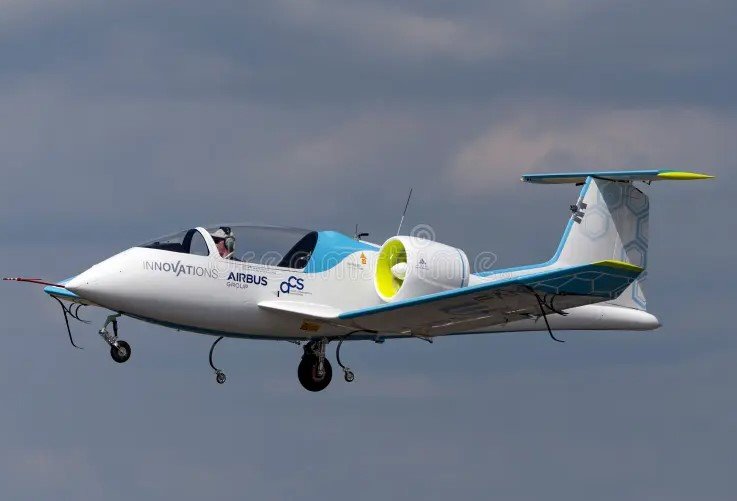NASA and Georgia Tech have teamed up to create electric aircraft that could change how people move around Atlanta. This project, started in 2025, aims to cut through the city’s heavy traffic with quiet, battery-powered planes that take off straight up and fly short distances.
The Big Push to Fix Atlanta’s Traffic Nightmare
Atlanta faces some of the worst traffic in the United States. Drivers lose hours each week stuck on roads like I-85 and I-285. This new partnership between NASA and Georgia Tech looks to solve that with electric vertical takeoff and landing planes, or eVTOLs. These aircraft promise faster trips without the road hassle.
The effort kicked off with the opening of a new lab at Georgia Tech in September 2025. Experts there work with NASA to build and test these planes. The goal is to make travel quicker and cleaner. For example, a trip from downtown Atlanta to the airport might drop from 45 minutes by car to just 10 minutes by air.
This comes at a time when cities worldwide hunt for ways to ease congestion. Recent studies show Atlanta ranks high in traffic delays, costing the economy billions each year. Electric planes could help by moving people above the mess.

Inside the RAVEN Project and Its Tech Goals
The heart of this work is the RAVEN project. It stands for Research Aircraft for eVTOL Enabling Technologies. This joint effort focuses on building a test plane that weighs about 1,000 pounds. It will check new ideas in electric power, flight controls, and ways to keep noise low.
Researchers plan to fly the RAVEN plane soon to gather real data. They want to make sure it works well in busy city skies. Noise is a big focus because old helicopters are too loud for neighborhoods. The team uses off-the-shelf parts to keep costs down and speed up testing.
Here are key features of the RAVEN aircraft:
- Electric motors for zero emissions during flight.
- Vertical takeoff to skip runways.
- Advanced controls for safe urban use.
- Noise reduction tech to blend into city life.
This project builds on broader trends in urban air mobility. By 2030, experts predict eVTOL markets could hit $4 billion as more cities adopt them.
One recent event tied to this is Joby Aviation’s air taxi flight between U.S. airports in 2025. It showed how these planes can slash travel times, like cutting a New York trip from 49 minutes by car to seven by air.
How Electric Planes Could Change Daily Commutes
Imagine skipping rush hour by flying to work. That’s the dream for Atlanta commuters. These eVTOLs could act like air taxis, picking up riders from rooftop pads and dropping them off fast. Costs might one day match a fancy ride-share service.
The planes run on batteries, so they cut pollution compared to cars or gas helicopters. A study from 2025 found eVTOLs emit 77 percent less CO2 than traditional helicopters on urban routes. This fits with global pushes for green transport.
| Benefit | Electric Planes | Traditional Cars |
|---|---|---|
| Travel Time for 50km | 25-30 minutes | 45-60 minutes |
| CO2 Emissions | Low (battery-powered) | High (gas or diesel) |
| Noise Level | Quiet operation | Engine and traffic noise |
| Cost per Trip | Aims to rival Uber | Varies with fuel prices |
This table shows why electric planes stand out. They save time and help the environment. In Atlanta, where 2.5 million people drive daily, this could ease pressure on roads.
Safety remains key. NASA brings expertise from space tech to make sure these planes fly without issues. Tests will cover everything from battery life to handling bad weather.
Experts say full rollout might happen by 2030. Until then, the team will refine designs based on flight data.
Challenges Ahead for Urban Air Mobility
No big change comes easy. Building eVTOLs faces hurdles like rules from the FAA. They need clear guidelines for city flights. Plus, setting up landing spots in Atlanta will take planning and money.
Public views matter too. Some worry about noise or safety, even with quiet designs. Recent posts on social media show excitement mixed with questions about costs and access.
Another issue is battery tech. Planes need strong, light batteries to fly far. Advances in 2025, like better lithium-ion cells, help, but more work is needed.
Despite these, the project moves forward. Georgia Tech’s new lab speeds up prototypes. NASA adds know-how from past aircraft work.
The Broader Impact on Cities Worldwide
This Atlanta project could inspire other places. Cities like Los Angeles and New York deal with similar traffic woes. If RAVEN succeeds, it might lead to global standards for electric air travel.
Sustainability drives this. With climate change in focus, zero-emission options gain traction. A 2025 report predicts urban air mobility will grow fast, driven by demand for quick, clean trips.
Atlanta stands to gain jobs too. The aerospace sector in Georgia already thrives, and this adds high-tech roles.
As tests ramp up, watch for updates on first flights. This could mark a new era where flying beats driving for short hops.
What do you think about flying over traffic? Share your thoughts in the comments and spread this story to spark talks on future travel.
